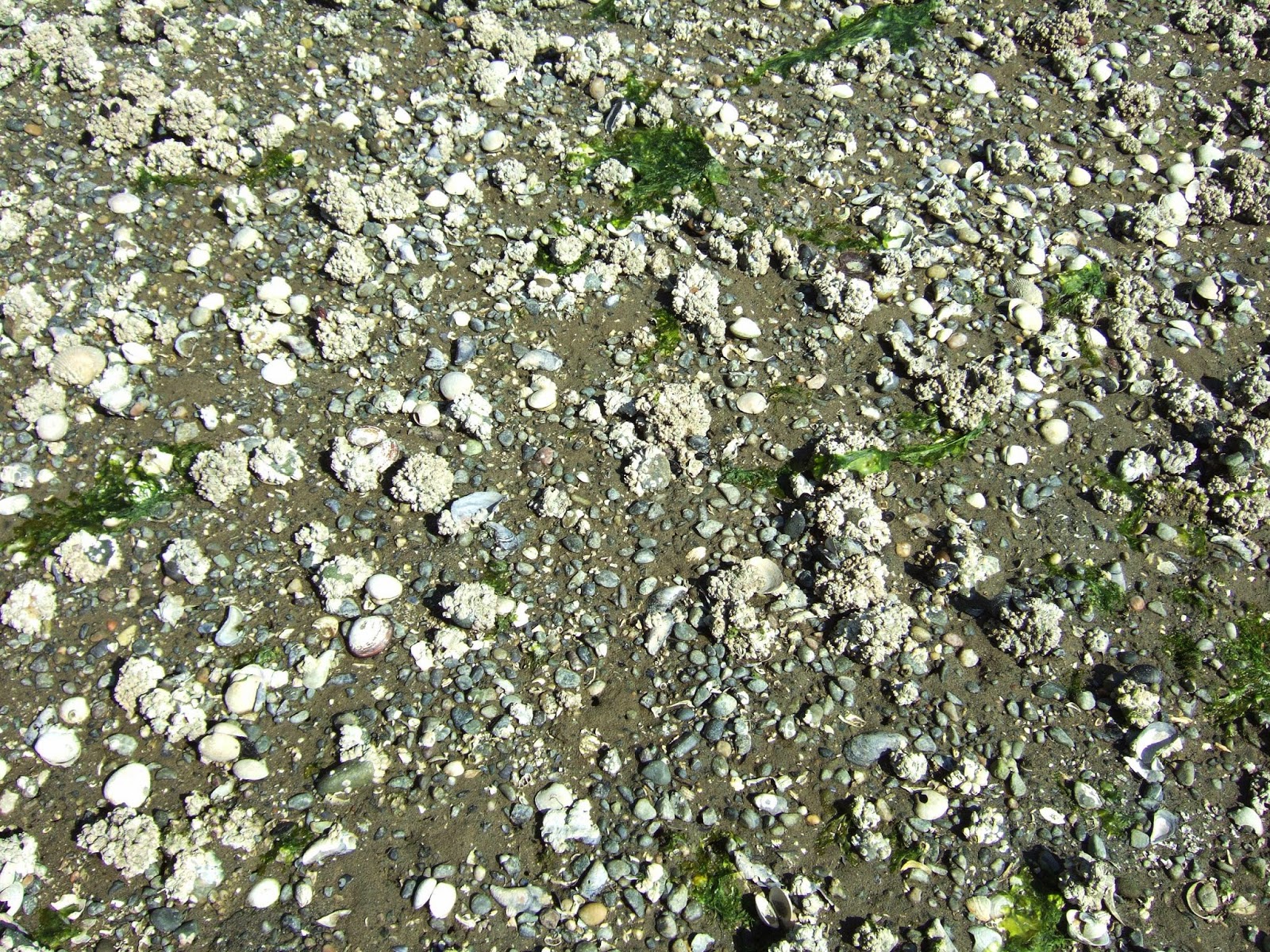I had a project on the southwest shore of Marrowstone Island near the upper, south end of Scow Bay. The beach here is primarily gravel at the surface but with a mix of sand and silts under the gravel as well. Except for the upper beach the tidelands here are crunchy with various tidal sea life too the point of influence where I walked.
barnacle encrusted beach gravel
Great heron sharing the beach with me
The shoreline bluff is primarily glacial drift. The discontinuity of a thin bed of cross-bedded sands formed a rather continuous line along the shore bluff perhaps a brief period when subsurface water flowed under this part of the ice sheet.
A very red skinned madrone at the top of the beach and base of the bluff
The above spectacular madrone was one of several in a stand and like many large healthy madrones despite the shoreline position, this madrone was rooted into a midden of shells and charcoal.
Shell fragments, charcoal and fire cracked andesite cobble
Layer of clam shells. Just a note - When I see these locations I look only.
Barnacles encrust the bedrock, but the odd concretions that dominate this formation are present although no where near as spectacular as the concretions on the east side of the island marrowstone-island-geology-trip-to-see-concretions
The bedrock outcrops on the island are oddly limited to the shoreline only - as far as I know and as far as geologic maps of the island show. At all locations the bedrock is covered with drift and does tot extend to the tops of the bluffs. There is likely some sort of normal fault cutting across the island as the south half of the island has bedrock outcrops and bedrock has been encountered in well borings while depth to bedrock on the north half of the island has not been reached even with relatively deep wells.











2 comments:
Just curious, what does the layer of clam shells signify that you leave it alone?
The material is an archeological site.
Post a Comment